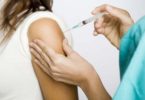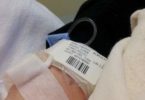What's in this article?
A computerized tomography (CT) scan combines a series of X-ray images taken from different angles and uses computer processing to create cross-sectional images, or slices, of the bones, blood vessels and soft tissues inside your body. CT scan images provide more detailed information than plain X-rays do.
A CT scan has many uses, but is particularly well-suited to quickly examine people who may have internal injuries from car accidents or other types of trauma. A CT scan can be used to visualize nearly all parts of the body and is used to diagnose disease or injury as well as to plan medical, surgical or radiation treatment.
CT scan facts
- CT scanning adds X-ray images with the aid of a computer to generate cross-sectional views of a patient’s anatomy.
- CT scanning can identify normal and abnormal structures and be used to guide procedures.
- CT scanning is painless and often performed in the outpatient setting.
- Iodine-containing contrast material is sometimes used in CT scanning. Patients with a history of allergy to iodine or contrast materials should notify their physicians and radiology staff.
When CT scans are used
CT scans can produce detailed images of many structures inside the body, including the internal organs, blood vessels and bones.
They can be used to:
- diagnose conditions – including damage to bones, injuries to internal organs, problems with blood flow, strokes and cancer
- guide further tests or treatments – for example, CT scans can help to determine the location, size and shape of a tumour before having radiotherapy, or allow a doctor to take a needle biopsy(where a small tissue sample is removed using a needle) or drain an abscess
- monitor conditions – including checking the size of tumours during and after cancer treatment
CT scans wouldn’t normally be used to check for problems if you don’t have any symptoms (known as screening). This is because the benefits of screening may not outweigh the risks, particularly if it leads to unnecessary testing and anxiety.
How the Test is Performed
You will be asked to lie on a narrow table that slides into the center of the CT scanner.
Once you are inside the scanner, the machine’s x-ray beam rotates around you. Modern spiral scanners can perform the exam without stopping.
A computer creates separate images of the body area, called slices. These images can be stored, viewed on a monitor, or printed on film. Three-dimensional models of the body area can be created by stacking the slices together.
You must stay still during the exam, because movement causes blurred images. You may be told to hold your breath for short periods of time.
Complete scans most often take only a few minutes. The newest scanners can image your entire body in less than 30 seconds.
Why CT scan is done?
Your doctor may recommend a CT scan to help:
- Diagnose muscle and bone disorders, such as bone tumors and fractures
- Pinpoint the location of a tumor, infection or blood clot
- Guide procedures such as surgery, biopsy and radiation therapy
- Detect and monitor diseases and conditions such as cancer, heart disease, lung nodules and liver masses
- Monitor the effectiveness of certain treatments, such as cancer treatment
- Detect internal injuries and internal bleeding
Are there risks in obtaining a CT scan?
A CT scan is a very low-risk procedure. The most common problem is an adverse reaction to intravenous contrast material. Intravenous contrast is usually an iodine-based liquid given in the vein, which makes many organs and structures, such as the kidneys and blood vessels, much more visible on the CT scan. There may be resulting itching, a rash, hives, or a feeling of warmth throughout the body. These are usually self-limiting reactions that go away rather quickly. If needed, antihistamines can be given to help relieve the symptoms. A more serious allergic reaction to intravenous contrast is called an anaphylactic reaction. When this occurs, the patient may experience severe hives and/or extreme difficulty in breathing. This reaction is quite rare, but is potentially life-threatening if not treated. Medications which may include corticosteroids, antihistamines, and epinephrine can reverse this adverse reaction.
Toxicity to the kidneys which can result in kidney failure is an extremely rare complication of the intravenous contrast material used in CT scans. People with diabetes, people who are dehydrated, or patients who already have impaired kidney function are most prone to this reaction. Newer intravenous contrast agents have been developed, such as Isovue, which have nearly eliminated this complication.
What happens after a CT scan?
You shouldn’t experience any after effects from a CT scan and can usually go home soon afterwards. You can eat and drink, go to work and drive as normal.
If a contrast was used, you may be advised to wait in the hospital for up to an hour to make sure you don’t have a reaction to it (see below). The contrast is normally completely harmless and will pass out of your body in your urine.
Your scan results won’t usually be available immediately. A computer will need to process the information from your scan, which will then be analysed by a radiologist (a specialist in interpreting images of the body).
After analysing the images, the radiologist will write a report and send it to the doctor who referred you for the scan, so they can discuss the results with you. This normally takes a few days or weeks.





